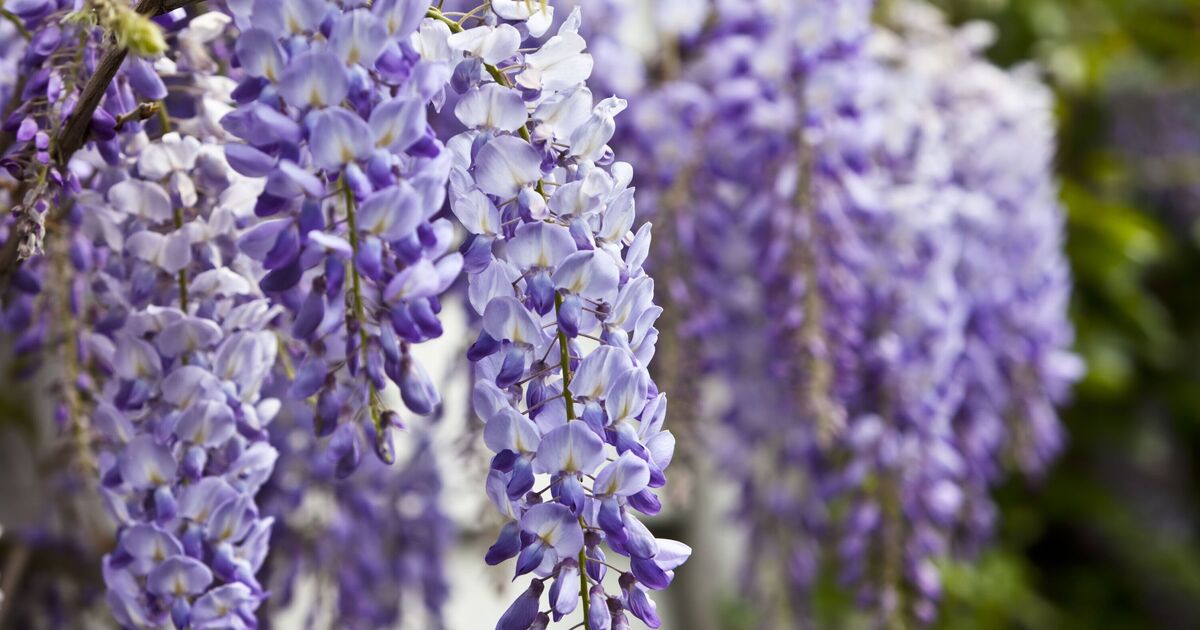Wisteria can produce some wonderful flowers to your garden in the late spring and early summer, but if you want to improve your chance at getting a second flush of some beautiful blooms, there are a few things you need to do to help it on its way. Garden designer and TikTok creator Ish shared his beginner guide for keeping wisteria flowering for longer than intended.
Wisteria produces long clusters of fragrant flowers in a variety of colours, including white, lilac, pink, and dark purple. They tend to bloom in May and June, but can be helped to encourage a second bloom in the later summer months. Ish wrote in the video’s caption: “It’s not too late to encourage your wisteria for a second flush of flowers this year! By trimming down, a little feed and keeping it from going wild you can encourage flowers to produce. The best bit is if you don’t achieve it you’ve already help set it up for next year!”
There are a few species of wisteria which have longer flower clusters that extend into June. It’s also possible to have a second bloom in late summer, during July and August.
Ish explained that this second bloom of wisteria may not be as “impressive” as the first, but that with the correct care, you can still see some flowers which still look good. He explained that during the summertime, wisteria can go wild, growing “green whips” which are looking for space to grow.
Ish said: “By having all of this growth, it’s focusing the energy on more of this and not the flowers. If you’re already happy with the size of it, give it a really good snip, and that way the energy is not wasted on this and it will focus on flower production.”
If your wisteria has already produced some buds, you can encourage them to start flowering by giving them some tomato feed once a week for two or three weeks. Ish explained tomato feed will help to increase potassium levels in the soil to help the flowers bloom.
Lastly, Ish said the last task you should focus on is deadheading the wisteria. He said: “Find some of the older spent flowers, especially if you’re getting a new flush, and get them cut away.”
Look out for little “nobbly bits” on the flowers’ stems to help indicate which are spent. This will get rid of any flowers or seed pods taking energy away from the new flush.
To help a second bloom, make sure the wisteria is getting plenty of sun and has a free-draining soil. Completing these tasks will also help encourage them to bloom bigger and better in the years to come.

